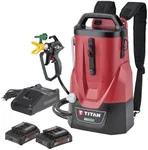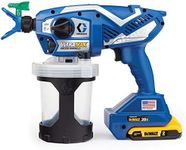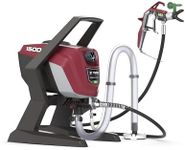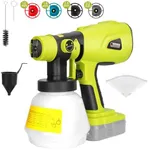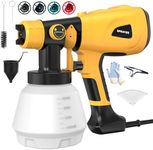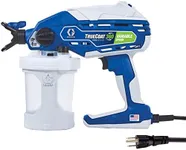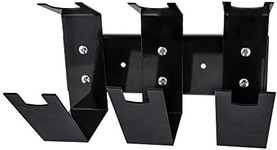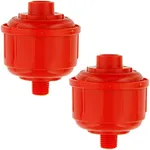Buying Guide for the Best Cordless Airless Paint Sprayer
Choosing the right cordless airless paint sprayer can make your painting projects much easier and more efficient. These devices are designed to provide a smooth, even coat of paint without the need for a power cord, making them highly portable and convenient. When selecting a cordless airless paint sprayer, it's important to consider several key specifications to ensure you get the best fit for your needs. Understanding these specs will help you make an informed decision and achieve the best results for your painting projects.Battery LifeBattery life refers to how long the sprayer can operate on a single charge. This is important because it determines how much work you can get done before needing to recharge. Battery life can vary widely, with some models offering just 30 minutes of use, while others can last several hours. If you have large projects or plan to use the sprayer frequently, look for a model with a longer battery life. For smaller, occasional tasks, a shorter battery life may be sufficient.
Paint CapacityPaint capacity is the amount of paint the sprayer can hold at one time. This is important because it affects how often you need to refill the sprayer. Paint capacities can range from small containers holding less than a quart to larger ones holding several quarts. If you are working on large surfaces or want to minimize interruptions, choose a sprayer with a larger paint capacity. For smaller projects or detailed work, a smaller capacity may be more manageable.
Spray Tip SizeThe spray tip size determines the width and thickness of the paint spray. This is crucial for achieving the desired finish and coverage. Spray tips come in various sizes, typically measured in thousandths of an inch. Smaller tips (e.g., 0.009 to 0.013 inches) are ideal for fine finishes and detailed work, while larger tips (e.g., 0.015 to 0.021 inches) are better for broad surfaces and thicker coatings. Choose a tip size based on the type of projects you plan to undertake.
Pressure ControlPressure control allows you to adjust the force at which the paint is sprayed. This is important for achieving a consistent finish and for working with different types of paint. Some sprayers offer variable pressure settings, while others have fixed settings. Higher pressure is useful for thicker paints and faster coverage, while lower pressure is better for detailed work and thinner paints. Consider the types of projects and paints you will be using to determine the level of pressure control you need.
Weight and ErgonomicsWeight and ergonomics refer to how heavy and comfortable the sprayer is to use. This is important for reducing fatigue and ensuring ease of use, especially during long painting sessions. Lighter sprayers are easier to handle and maneuver, but they may have smaller paint capacities or shorter battery life. Heavier models may offer more features but can be tiring to use. Look for a balance between weight and comfort that suits your physical capabilities and the duration of your projects.
Ease of CleaningEase of cleaning is how simple it is to clean the sprayer after use. This is important for maintaining the sprayer's performance and longevity. Some models have features that make cleaning easier, such as removable parts or self-cleaning functions. Consider how often you will use the sprayer and how much time you are willing to spend on maintenance. A model that is easy to clean will save you time and effort in the long run.

